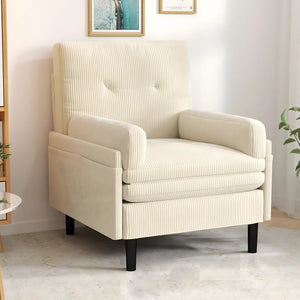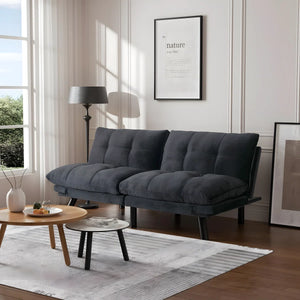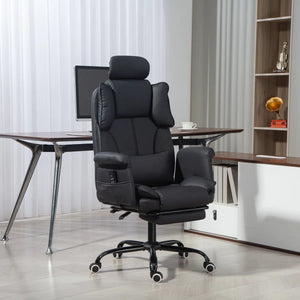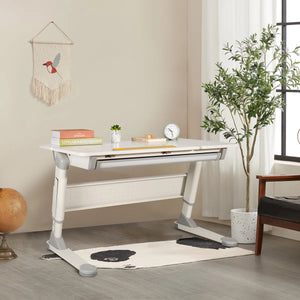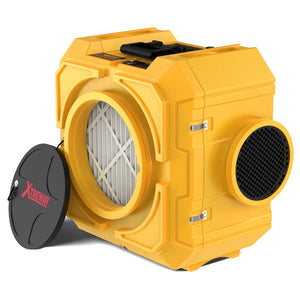In the quest for tranquility at home or work, soundproof wall panels have become a widely popular solution. But have you ever wondered: how do these seemingly simple panels actually keep the noise out? The answer is far more complex than just "a thick board."
At UNISOAR, we believe informed consumers make the best decisions. Today, we're diving deep into the inner world of soundproof panels, breaking down their common materials, core structure, and the science behind how they work.

Core Principle: The Essential Difference Between Soundproofing and Sound Absorption
Before discussing materials, it's crucial to clarify a key concept: Soundproofing (Blocking) and Sound Absorption are different.
Soundproofing (Sound Blocking): Aims to prevent sound from traveling from one space to another. For example, stopping your neighbor's TV noise or street clamor from entering your bedroom. This requires mass, density, and airtightness.
Sound Absorption: Reduces echo and reverberation within a room, making interior sound clearer. For instance, in a home theater, acoustic absorption makes dialogue easier to understand. This is typically achieved with porous, fluffy materials.
The "Anatomy" of a Soundproof Panel: A Layer-by-Layer Breakdown
An effective soundproof panel is often like a sandwich, laminated or composed of multiple layers of materials with different functions. Imagine it as a "sound fortress" with three key lines of defense against noise:

l The First Layer: High-Density Face Layer. This is the fortress's sturdy, heavy outer wall.
Materials: High-density rubber, PVC, or rigid fiberboard.
Function: Uses its own mass and weight to directly "block" a large portion of sound. Think of sound waves like a battering ram – the heavier and more solid the wall, the harder it is to break through. This is the most direct, straightforward physical defense.
l The Second Layer: Core Damping Layer. This is the "high-tech vibration-damping layer" hidden inside the wall, acting like a sticky, elastic super-soft gel.
Materials: Most commonly and effectively, damping gel (Viscoelastic Polymer).
Function: This gel layer absorbs vibrational energy and converts it into minimal heat through its own slow, viscous movement and deformation. It's the most efficient line of defense, "digesting" vibrations.
l The Third Layer: Sound-Absorbing Core. This is the "porous sponge wall" on the innermost side of the fortress.
Materials: Mineral wool, fiberglass wool, or polyester fiber cotton (similar to dense batting).
Function: It traps and dissipates sound energy within the wall assembly, reducing internal reflections and "cleaning up" the sound.
Common Types of Soundproof Panels & Their Materials
l Mass-Loaded Vinyl (MLV) / Soundproof Blankets (Mass-Loaded Type)
Materials: High-density rubber, loaded PVC.
How it Works: Relies purely on mass to block sound, like putting a bulletproof vest on your wall.
Best For: Extreme noise like factories, roadside locations.
l The Smart Sandwich (Composite Damping Type: e.g., UNISOAR's approach)
Materials: Rigid Layer + Viscoelastic Damping Gel + Rigid Layer.
How it Works: Relies on the middle layer to "digest" vibrations, achieving high performance with relatively thin profiles.
Best For: Home soundproofing, recording studios – often the most effective general solution.
l Decorative Acoustic Panels (Primarily Absorbers)
Materials: Polyester fiber cotton + decorative fabric.
How it Works: Only absorbs room echo and reverberation; does not significantly block sound from traveling between rooms.
Best For: Improving sound quality in meeting rooms, home theaters; focuses on aesthetics.
The UNISOAR Material Philosophy: Why We Choose Composite Structures

At UNISOAR, we understand that "peace and quiet" is a luxury. Therefore, in our soundproof panel design, we move beyond the limitations of single materials, focusing on creating composite solutions.
l Eco-Friendliness & Safety
l Efficiency & Aesthetics
l Targeting Different Noise Frequencies
Our multi-layer structure effectively handles a wide range of noises across different frequencies, providing you with a truly comprehensive sanctuary of quiet.
Conclusion: Choose UNISOAR Panels to Protect Your Comfort
A soundproof panel is a composite material system, meticulously engineered based on acoustic principles. From the high-density face layer to the viscoelastic damping core, and the porous sound-absorbing inner layer – each plays an indispensable role in the battle against noise. When selecting a soundproofing solution, be sure to pay attention to its core structure and materials, not just its appearance or thickness. An excellent soundproof panel should be an intelligent system that knows how to "manage" sound energy.

We hope this in-depth analysis helps you make a more informed choice and move towards a quieter, more comfortable life.
What kind of noise is troubling you? It's time to explore UNISOAR's professional soundproofing solutions. Contact us now for a free consultation.

